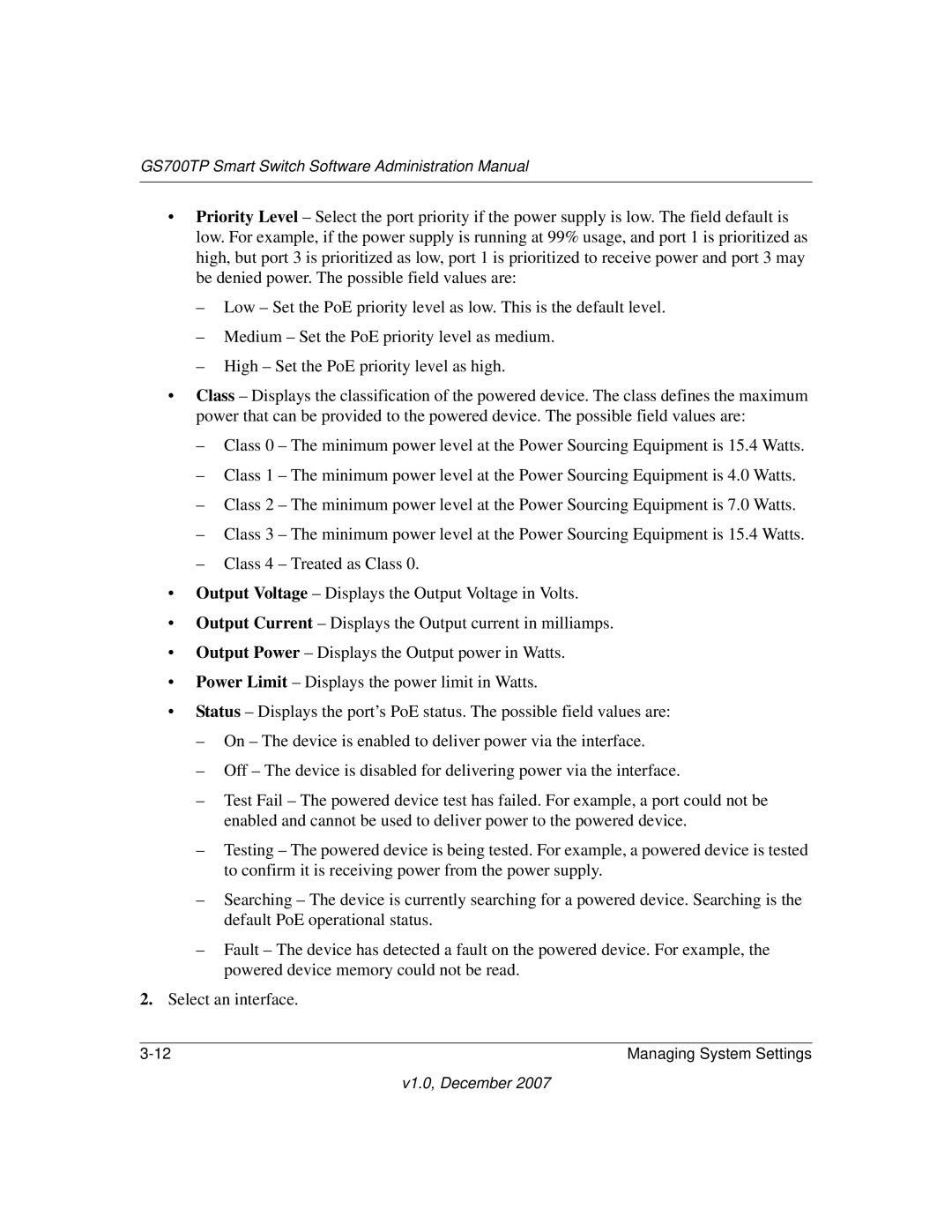GS700TP Smart Switch Software Administration Manual
•Priority Level – Select the port priority if the power supply is low. The field default is low. For example, if the power supply is running at 99% usage, and port 1 is prioritized as high, but port 3 is prioritized as low, port 1 is prioritized to receive power and port 3 may be denied power. The possible field values are:
–Low – Set the PoE priority level as low. This is the default level.
–Medium – Set the PoE priority level as medium.
–High – Set the PoE priority level as high.
•Class – Displays the classification of the powered device. The class defines the maximum power that can be provided to the powered device. The possible field values are:
–Class 0 – The minimum power level at the Power Sourcing Equipment is 15.4 Watts.
–Class 1 – The minimum power level at the Power Sourcing Equipment is 4.0 Watts.
–Class 2 – The minimum power level at the Power Sourcing Equipment is 7.0 Watts.
–Class 3 – The minimum power level at the Power Sourcing Equipment is 15.4 Watts.
–Class 4 – Treated as Class 0.
•Output Voltage – Displays the Output Voltage in Volts.
•Output Current – Displays the Output current in milliamps.
•Output Power – Displays the Output power in Watts.
•Power Limit – Displays the power limit in Watts.
•Status – Displays the port’s PoE status. The possible field values are:
–On – The device is enabled to deliver power via the interface.
–Off – The device is disabled for delivering power via the interface.
–Test Fail – The powered device test has failed. For example, a port could not be enabled and cannot be used to deliver power to the powered device.
–Testing – The powered device is being tested. For example, a powered device is tested to confirm it is receiving power from the power supply.
–Searching – The device is currently searching for a powered device. Searching is the default PoE operational status.
–Fault – The device has detected a fault on the powered device. For example, the powered device memory could not be read.
2.Select an interface.
Managing System Settings |
v1.0, December 2007
